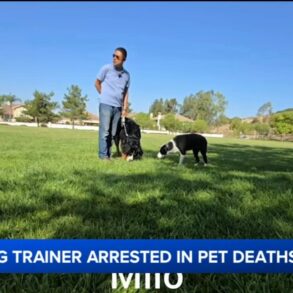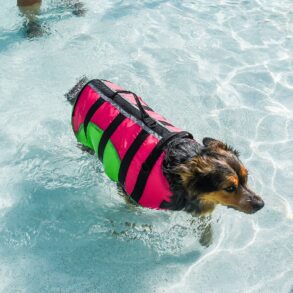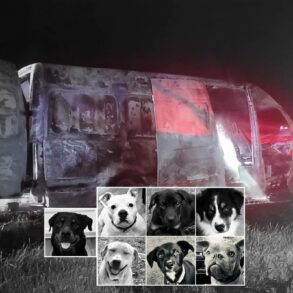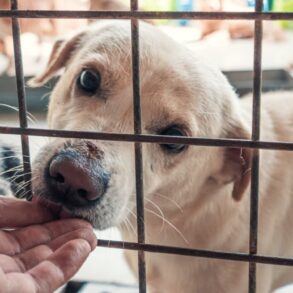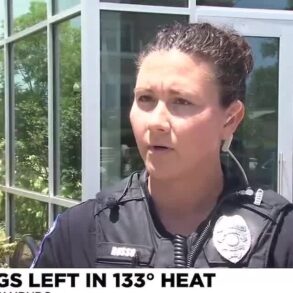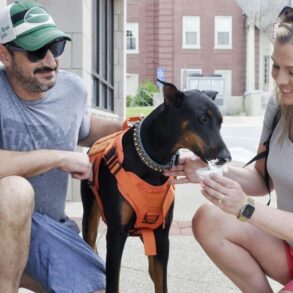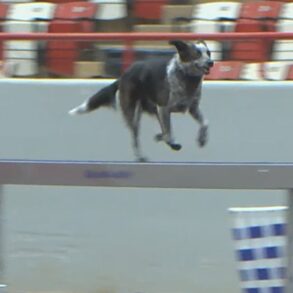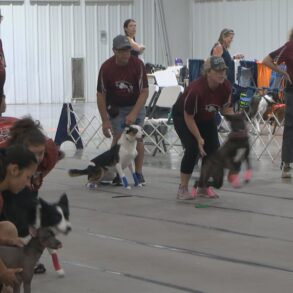
Dog days: ensuring pet safety in summer heat
As temperatures rise, ensuring the safety of our pets becomes increasingly important.
It’s going to be hot in Indianapolis next week, and the severe heat not only poses health risks to Hoosiers, but also family pets.
To understand how to keep animals safe and comfortable, IndyStar previously spoke with Dr. Aimee Brooks, an emergency critical care specialist at Purdue University’s College of Veterinary Medicine, for advice.
Pets, just like humans, can experience heat exhaustion and heat stroke when exposed to high temperatures, and time is the biggest factor in both severity and seeking help, Dr. Brooks said.
Should I be worried about my cat during severe heat?
Cats are good about regulating themselves in the heat and generally more tolerant, Dr. Brooks said, it’s uncommon to see them with heat-related illnesses. But dog owners need to be more vigilant.
What your pet should avoid during heat waves
Pets need to acclimate to heat, and during a heat wave is not the time to do it, Dr. Brooks said, as the process can take weeks or months.
Dogs that are outside during times of high heat should have access to shade and all the water they want, and if they are not acclimated to the heat, they should not be outside for long periods of time.
“I would try to avoid vigorous exercise in the heat of the day,” Dr. Brooks said. “If you’re going to take them for walks, mornings and evenings are better ― not only because of the environmental heat, but the pavement gets really hot, and they can actually get burns on their feet from blacktop.”
Some dog breeds with short faces (like French bulldogs) are really prone to heat stroke since they can’t pant, and that’s how they cool off, Dr. Brooks said.
Animals that are obese, have heart disease or respiratory issues are also more prone to heat-related illnesses, so owners should take more care.
How to tell if your pet is overheating. Symptoms in pets suffering heat-related illness
If a pet is outside in the heat for too long, there are ways to tell if they are suffering from heat-related illnesses.
Dogs will pant more heavily when they first start to overheat. The first signs of heat exhaustion to look out for are when dogs seek out shade and lie down to try and cool off. Some dogs might start drooling a lot, Dr. Brooks said.
Story continues after photo gallery.
If these symptoms continue, or the dog is unable to cool off, the illness can progress to heat stroke.
“That usually happens when their body gets above 105 degrees Fahrenheit or so,” Dr. Brooks said. “Then you might see vomiting, diarrhea or collapse.”
The dog’s mental state can also be affected from heat stroke. These symptoms show up as a decreased level of consciousness and could lead to unresponsiveness.
A dog’s gums will initially get very red and, as they progress into shock, become a pale purple.
How to care for pets suffering from the heat
The longer a pet is exposed to the heat, the worse the outcome could be.
If a pet is exhibiting signs of heat exhaustion, Dr. Brooks said the best thing to do is cool them off with cool water from a sink or hose.
“One thing people do need to be aware of about the hose is that if the hose has been sitting out in the sun with water in it, the first water that comes out of the hose is really hot,” Dr. Brooks said. “I’ve actually seen animals with burns from the water.”
Once the dog is wet to the skin, bring them into a shady area or air-conditioned space. If an owner is able, check the dog’s temperature to make sure it’s not above 105. Dr. Brooks also points out that overcooling can also cause issues, so don’t cool them off so much that their temperature drops below 103.
If symptoms get beyond heavy panting (or don’t stop within 30 minutes to an hour) and into gastrointestinal issues, Dr. Brooks said it’s time to take them to a veterinarian.
It’s best to take the pet to the closest veterinarian so they can be cooled and rehydrated as soon as possible.
“Time matters when it comes to getting them cooled off and resuscitated,” Dr. Brooks said.
Nearly every vet is equipped to administer fluids and cool a dog off and can refer a pet to a more capable hospital if the symptoms are more severe.
Never leave pets unattended in hot cars
It is never safe to leave a pet unattended in a vehicle, it is especially important on warm or hot summer days.
Every year, hundreds of pets die from heat exhaustion because they are left in parked vehicles, according to the American Veterinarian Medical Association. The temperature inside a vehicle can rise almost 20º F in just 10 minutes, and almost 30º F in 20 minutes.
Story continues after photo gallery.
The longer a pet, child or person is inside a car turned off in the heat, the higher it goes.
At one hour, your vehicle’s inside temperature can be more than 40 degrees higher than the outside temperature. Even on a 70-degree day, that’s 110 degrees inside a car.
Heat safety tips from the ASPCA
- Give pets plenty of fresh, clean water when it’s hot or humid outdoors, as pets can get dehydrated quickly. Make sure your pets have a shady place to get out of the sun, be careful not to over-exercise them and keep them indoors when it’s extremely hot.
- Know the symptoms of overheating in pets, which include excessive panting or difficulty breathing, increased heart and respiratory rate, drooling, mild weakness, stupor or even collapse. Symptoms can also include seizures, bloody diarrhea and vomit along with an elevated body temperature of over 104 degrees.
- Never leave your animals alone in a parked vehicle. Not only can it lead to fatal heat stroke, but it’s illegal in several states!
- Know that animals with flat faces, like Pugs and Persian cats, are more susceptible to heat stroke since they cannot pant as effectively. These pets, along with the elderly, overweight and those with heart or lung diseases, should be kept cool in air-conditioned rooms as much as possible.
- Keep all unscreened windows or doors in your home closed and make sure adjustable screens are tightly secured. Open unscreened windows pose a real danger to pets, who often fall out of them.
- Feel free to trim longer hair on your dog, but never shave your dog. The layers of dogs’ coats protect them from overheating and sunburn. Brushing cats more often than usual can prevent problems caused by excessive heat. And be sure that any sunscreen or insect repellent product you use on your pets is labeled specifically for use on animals.
- Don’t let dogs linger on hot asphalt when the temperature is very high. Being so close to the ground, your pooch’s body can heat up quickly, and sensitive paw pads can burn. Keep walks during these times to a minimum.
For more summer safety tips from the ASPCA visit aspca.org.
Katie Wiseman covers trending news for IndyStar and Midwest Connect. Contact her at klwiseman@gannett.com. Follow her on Bluesky @katiewiseman.
Karl Schneider is an IndyStar environment reporter. You can reach him at karl.schneider@indystar.com. Follow him on Twitter @karlstartswithk
IndyStar’s environmental reporting project is made possible through the generous support of the nonprofit Nina Mason Pulliam Charitable Trust.
This post was originally published on this site be sure to check out more of their content.






